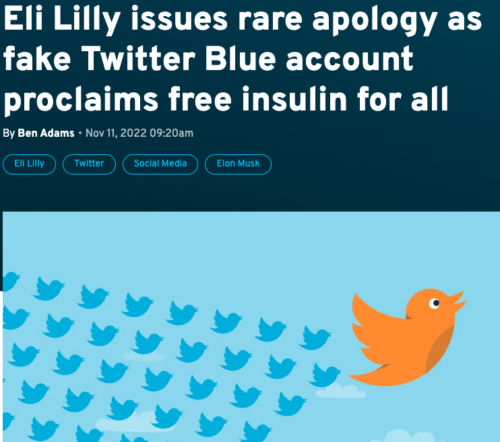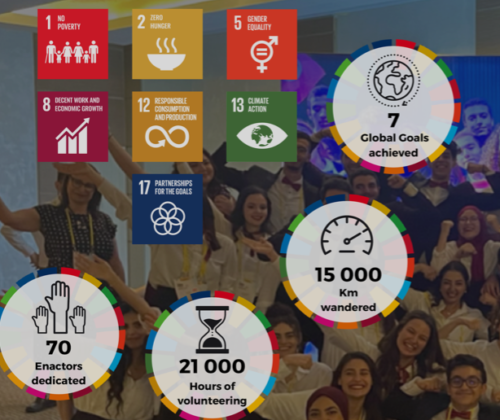If you are just tuning in to my series highlighting some of my long-time IT manager sources, see part 1 where I introduce them and part 2 where I talk about some of their more memorable purchases. In this edition, I want to talk about the people behind all the gear.
 Erica Wilson has had many career transitions “but I’d have to say taking on a CISO role was certainly a good experience. I learned a LOT about myself and why having a people-first mindset – supporting their wellbeing and growth — needs to be critical for all organizations. By doing so, with a small but mighty team we were able to accomplish some amazing things.”
Erica Wilson has had many career transitions “but I’d have to say taking on a CISO role was certainly a good experience. I learned a LOT about myself and why having a people-first mindset – supporting their wellbeing and growth — needs to be critical for all organizations. By doing so, with a small but mighty team we were able to accomplish some amazing things.”
Adam Kuhn told me that looking at all his career transitions, “My biggest failure was staying in positions too long.” Like many of my sources, he considers himself a lifelong learner and likes to learn about new technology. When you stop learning, it is time to find new challenges
Gayle Barton told me, “It’s fun to look back at the great projects and fun tools I’ve used, but it’s the people that I remember more often, and especially the people I had the opportunity to help, hire, mentor, or promote. I get the most pleasure from the opportunities I’ve had to hire people I think someone else might have overlooked, to move people forward on their career path, or to mentor students and help them see new possibilities. For the most part, I made some pretty great hires.” When she was at Springfield College she remembers: “They had never had a person designated to help faculty with using technology in teaching, and you can imagine the state of technology use in the classroom. I was able to create a position for an instructional technologist but the pay was low and the pool of applicants was very small. We ended up with a experienced high school teacher who had taught Microsoft Word to hundreds or thousands of students, and was looking for a career change, and I thought that if she could answer the same Word questions over and over, she could teach our faculty to use a new learning management system. She turned out to be great.”
She mentioned several other people who were special to her:
- The English professor who was finally able to publish his life’s work with the help of a custom database.
- The 18 year-old administrative assistant who is now her university’s Director of Campus Services and Outreach.
- The former copier repair technician who is on his way to becoming a great network engineer.
- The people who Gayle nudged out of management positions, who were more successful and happier in new roles and actually thanked her later.
- The man who wanted to get home from the Middle East and who rebuilt a campus’ dying infrastructure. She said, “He has skills that I don’t, but I could sell the vision, ask hard questions, and remove obstacles. Together we put that university on a solid path forward, and it was a wonderful way to end my professional career.”
Gayle told me that “it was mostly great fun, but I am happy to be retired and to let someone else have a turn!”
David Goodman came to the CIO for the International Rescue Committee to create a functional and more business-oriented IT organization. “It was both the high and low points of my career and I doubled the headquarters department during my tenure. But when it came time to develop and implement a longer-term plan, my CEO just didn’t trust me. He rejected my plan and I had to leave. I realized I wasn’t the right guy to implement this plan. My core strength was as a turnaround guy to fix things.” That job helped him understand that “Work doesn’t define who I am. I found out that I had lots of value outside of work. And I was able to have a lot healthier attitude about work later on.”
David continues: “You were an enormous mentor and helped me early on in my career. You believed in me before I understood what I could do and taught me to take what the tech vendors said with lots of grains of salt. You have touched a lot of people and had a front-row seat to the industry and significant historical moments.”
Thanks David, and thanks to all of my sources for making my job so much fun and so rewarding. It has been a great 30 years, and I am glad to have played such a role for so many people, and hope you have enjoyed reading their stories.
 Gayle Barton remembers the first time she wrote a purchase order for $75,000 worth of desktop computers when she was at St. Lawrence University. “It was probably three times my annual salary at the time and was quite exciting.” She got a handle on things since then: “For several jobs I changed the desktop purchasing process from ‘everybody gets what they want,’ with all the attendant complications of ordering, configuring, delivering, and training, to a standardized system. People got four choices: laptop or desktop, Mac or PC, with exceptions for people who genuinely needed something else. We saved hundreds of person-hours and much angst every year.” She developed the first web pages at one university “at a time when the dining hall menu, the bus schedule, the weather and the campus directory were the most popular pages. We gradually moved into helping with digital storytelling for both faculty and students and marrying databases to the web.” Gayle also remembered picking her university’s domain name with the director of operations. “We knew we weren’t the right people to choose this but no one else would understand or care, so we just had a laugh and went forward. Our first user was a math professor who messaged his family in Israel.”
Gayle Barton remembers the first time she wrote a purchase order for $75,000 worth of desktop computers when she was at St. Lawrence University. “It was probably three times my annual salary at the time and was quite exciting.” She got a handle on things since then: “For several jobs I changed the desktop purchasing process from ‘everybody gets what they want,’ with all the attendant complications of ordering, configuring, delivering, and training, to a standardized system. People got four choices: laptop or desktop, Mac or PC, with exceptions for people who genuinely needed something else. We saved hundreds of person-hours and much angst every year.” She developed the first web pages at one university “at a time when the dining hall menu, the bus schedule, the weather and the campus directory were the most popular pages. We gradually moved into helping with digital storytelling for both faculty and students and marrying databases to the web.” Gayle also remembered picking her university’s domain name with the director of operations. “We knew we weren’t the right people to choose this but no one else would understand or care, so we just had a laugh and went forward. Our first user was a math professor who messaged his family in Israel.” Terry Evans said:
Terry Evans said: Jerry Hertzler
Jerry Hertzler  Adam Kuhn
Adam Kuhn Sam Blumenstyk
Sam Blumenstyk AI is a double-edged sword. It has enabled the creation of software tools that have helped to automate tasks such as prediction, information retrieval, and media synthesis, which have been used to improve various cyber defensive measures. However, AI has also been used by attackers to improve their malicious campaigns. For example, AI can be used to poison ML models and thus target their datasets and steal login credentials (think keylogging, for example). I recently spent some time at a newly created
AI is a double-edged sword. It has enabled the creation of software tools that have helped to automate tasks such as prediction, information retrieval, and media synthesis, which have been used to improve various cyber defensive measures. However, AI has also been used by attackers to improve their malicious campaigns. For example, AI can be used to poison ML models and thus target their datasets and steal login credentials (think keylogging, for example). I recently spent some time at a newly created  Twitter has evolved from being the world’s town square and the global media assignment story editor to the place for shaming. Those blue checkmarks that seemed so valuable back in 2012 or so have turned into Troll-a-rama. Someone
Twitter has evolved from being the world’s town square and the global media assignment story editor to the place for shaming. Those blue checkmarks that seemed so valuable back in 2012 or so have turned into Troll-a-rama. Someone  Qualys’ annual security conference returned to a live-only event this week at the Venetian Hotel in Las Vegas, and the keynote addresses started things off on a very practical note… about selling coconuts, toasters, and carbon monoxide detectors. The first two keynotes featured speeches from both Shark Tank celebrity businessman and CEO of Cyderes, Robert Herjavec, and Qualys’ President and CEO, Sumedh Thakar. Both spoke around the similar theme of qualifying and quantifying digital cyber risks.
Qualys’ annual security conference returned to a live-only event this week at the Venetian Hotel in Las Vegas, and the keynote addresses started things off on a very practical note… about selling coconuts, toasters, and carbon monoxide detectors. The first two keynotes featured speeches from both Shark Tank celebrity businessman and CEO of Cyderes, Robert Herjavec, and Qualys’ President and CEO, Sumedh Thakar. Both spoke around the similar theme of qualifying and quantifying digital cyber risks. One of the fun volunteer jobs that I have is talking to American Red Cross volunteers about the wonderful work they do to help others in need. I recently w
One of the fun volunteer jobs that I have is talking to American Red Cross volunteers about the wonderful work they do to help others in need. I recently w Once again I had an opportunity to judge several collegiate entrepreneurial efforts as part of the
Once again I had an opportunity to judge several collegiate entrepreneurial efforts as part of the